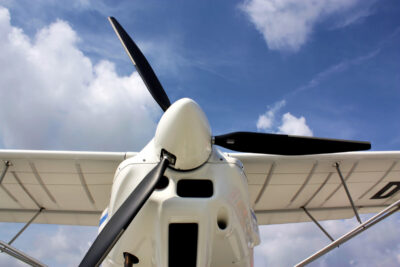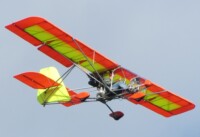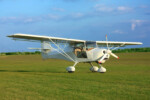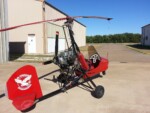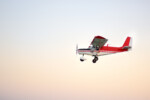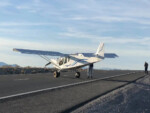How Fast Can An Ultralight Fly?
30 May 2023 | Updated on February 05, 2024
People do not fly ultralight because of their advanced technology or supersonic speeds, because they have neither. Ultralight aircraft are lightweight experimental airplanes with a simple design and basic controls reminiscent of early planes. However, ultralights remain popular among individuals who wish to fly without obtaining a pilot’s license because they offer thrilling flying experiences at a leisurely pace – a reason why they are called ‘bikes in the skies.’
There are legal restrictions to how fast an ultralight aircraft can travel in the United States. However, several pilots often make their ultralight aircraft go faster with engine upgrades or by installing more powerful engines. So, how fast can an ultralight go? We will explore the topic in this article and explain the factors affecting an ultralight’s speed, including the fastest ultralight aircraft and their maximum speeds.
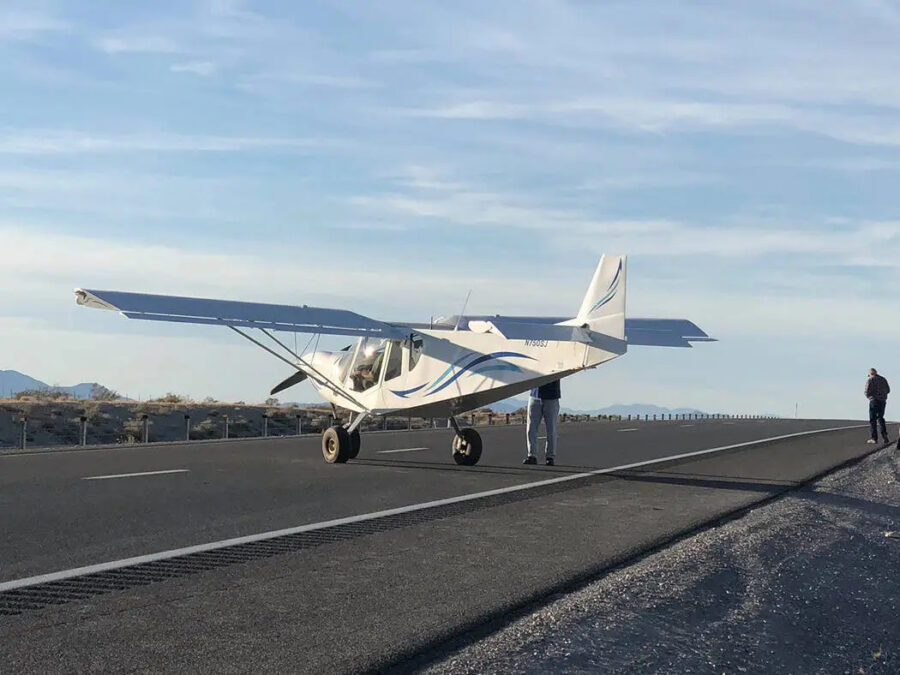

Photo by Ryan Muccio
How fast can an ultralight aircraft go?
A key part of an ultralight’s definition per the Federal Aviation Authority FAA regulations is its legal maximum speed. According to 14 CFR Part 103 rules, an ultralight vehicle must not exceed 55 knots (102 km/h; 63 mph) calibrated airspeed at full power in level flight.
Although the specific provision is widely accepted within the ultralight aviation community to ensure the safety of pilots and other airborne aircraft, some ultralight vehicles with more aerodynamic design features and powerful engines typically achieve speeds exceeding the legal 55 knots limit. But readers must be aware that any lightweight experimental aircraft exceeding 55 knots cruising speed does not qualify as an ultralight in some and may not be flown as such.
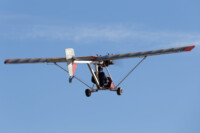

Related
How High Can An Ultralight Fly?
Top speed of different ultralight types
All powered ultralight types are typically fitted with either 2 or 4-stroke gasoline engines producing 25-50 horsepower. These engines’ top speed depends on the ultralight weight and design. Below are some examples of different ultralight types and their maximum airspeed.
- Fixed-wing ultralight: fixed wing ultralight aircraft range from simple homebuilt aircraft consisting of wood or metal framing with fabric skin to advanced composite recreational aircraft. These ultralight types have a 3-axis control like conventional airplanes and are the fastest-powered ultralight, with top speeds averaging between 100-140 mph. The Blackwing Sweden Blackwing 635 RGV is the world’s fastest fixed-wing ultralight with a top speed of 229.9 mph.
- Trikes or weight-shift control ultralights: ultralight trikes are powered hang glider aircraft with weight-shift controls and a large delta-shaped fabric flex-wing suspended above a cockpit and engine. Trike Ultralight’s top speeds range between 50-70 mph. The world’s fastest ultralight trike is the Swift S-1, with an 80 mph top speed.
- Air Creation Scout – 75 mph (113 km/h)
- Aerolite 100 – 70 mph (113 km/h)
- Moyes Ranger – 65 mph (105 km/h)
- Pipistrel Sinus – 60 mph (97 km/h)
- Powered hang-gliders: are also known as powered harnesses or hang motors. These consist of a hang glider harness functioning as a wing and control frame, with a motor and propeller in pusher configuration, i.e., the pilot launches from a hill or a flat surface
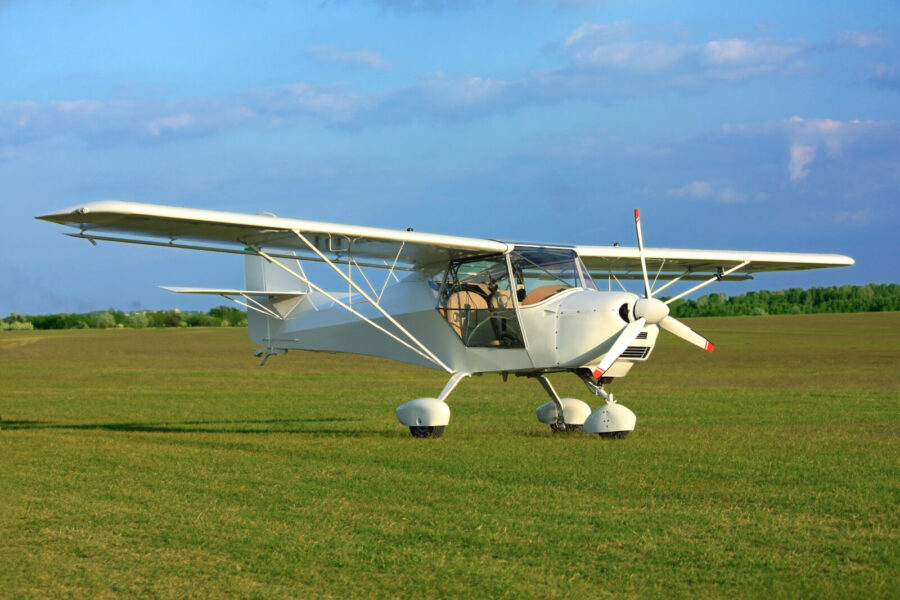

Factors affecting ultralight speed
An ultralight maximum airspeed depends on several crucial factors, some specific to certain ultralight types and models. When deciding the best ultralight aircraft for your needs, it is important to check the manufacturer’s recommendations or consult with certified ultralight instructors.
Below are some of the factors.
- Power-to-weight ratio: is a factor determining how fast your ultralight can fly and is influenced by weight, engine power, and fuel efficiency. Ultralights with a higher power-to-weight ratio achieve higher speeds than ultralights with a lower power-to-speed ratio.
- Power: how much power your ultralight engine produces significantly impacts its top speed. Torquey, high horsepower engines have faster acceleration and top speed than engines with low torque and horsepower.
- Ultralight design: more aerodynamic ultralight designs with sleek, streamlined shapes have better wind resistance resulting in higher speeds.
- Wind design: an ultralight aircraft wing and airfoil affect how much lift it generates, influencing its top speed. Wings generating greater lift and less drag produce higher speeds than wing designs that do not.
- Atmospheric conditions: hot or cold temperatures significantly affect how fast an ultralight can go. Cold air allows ultralight engines to produce more power and increases air molecules, generating more lift for the wings and increasing an ultralight’s top speed. On the other hand, higher temperatures result in lower engine performance and more drag on the wings resulting in lower speeds.
- Altitude: the thinner low-density air at higher altitudes provides less lift for the wings and reduces engine performance, reducing an ultralight’s top speed.
- Wind: a strong headwind can slow down an ultralight, reducing its top speed, while a tailwind pushes an ultralight forward, resulting in higher speeds.
- Wing loading: is the weight that an ultralight wing supports relative to the wings area. Lightweight, large-winged ultralight aircraft with a lower wing loading achieve higher top speeds than heavier smaller-winged ultralights with higher wing loading.
- Pilot skill: more experienced ultralight pilots with superior flying skills can extract more speed from an aircraft than less experienced pilots by using various flight techniques to fly more efficiently.


The most popular ultralights and their top speed
Most ultralight owners stick with reputable manufacturers known for producing reliable ultralight aircraft. The growing appeal of recreational flying with lightweight experimental aircraft is a testament to the improvement in ultralight design and top speeds over the decades.
Below is a list of the most popular ultralight models and their top speeds.
| Ultralight Model | Manufacturer | Top Speed |
| Zigolo MG-12 “ | Aviad Francesco Di Martino | 22-60 mph |
| 1100R Mini-Max | Team Mini-Max | 70 mph |
| NorthWing Maverick 2 RT. | North Wing Design | 40-60 mph |
| Kolb Twinstart Mark III | Kolb Aircraft | 95 mph |
| Quicksilver MXL II Sport | Quicksilver Aircraft | 67 mph |
| Aeromarine Merlin Lite. | Aeromarine LSA | 63 mph |
| Aerolite 103 | Aero-Works Inc | 69.5 mph |
| Quicksilver MX 103 | Quicksilver Aircraft | 54 mph |
| Kolb Firefly | Kolb Aircraft | 63 mph |
| Jordan Lake Air-Bike 103 | Jordan lake Aero | 80 mph |
| Aventura UL | Aero Adventure | 73 mph |
| Badland F1 UL | Badland Aircraft | 44 mph |
| CGS Hawk Arrow | CGS Aviation | 100 mph |
| CGS Hawk Ultra | CGS Aviation | 55-64 mph |
| Kolb Firestar | Kolb Aircraft | 80 mph |
| Sparrow Ultralight | Carlson Aircraft | 105 mph |
What is the longest ultralight flight?
With careful planning, ultralight aircraft can travel long distances, including cross-country flights. Two Czech ultralight pilots, Jiri Prusa and Eliska Kudejova, hold the world record for the longest non-stop ultralight flight. On n May 8, 2023, they flew their Shark 600 ultralight (a composite ultralight designed for long-range flights), a distance of 644 miles (1,063 kilometers) in a flight that lasted 10 hours and 24 minutes.
How far do ultralights go on a tank of gas?
Ultralight aircraft’s flight range is severely limited since they are required by law to carry a maximum of 5 gallons of fuel. This is not an issue if you intend to use your ultralight aircraft during the occasional weekend for a few hours of recreational flying.
How far you can fly your ultralight on a gas tank depends on prevailing winds and your flight altitude. However, the vehicle’s weight and engine fuel-burn rate are also vital. For example, a 200-pound (90 kg) ultralight vehicle fitted with the Rotax 2-stroke engine and traveling at 48 mph in calm winds has a maximum range of 147 miles or three hours without refueling.
Windy conditions can significantly impact your ultralight vehicle’s maximum range. A 20-knot headwind can reduce your ultralight maximum range by almost fifty percent.


Conclusion
Ultralights are an affordable and safe (provided you stick to safety guidelines) way to get into flying. Flying an ultralight at its top speed offers a more thrilling flying experience and allows pilots to avoid unsafe situations like outrunning bad weather conditions. You need proper training and experience to fly an ultralight at high speeds, and we recommend that you only fly during suitable conditions.




















